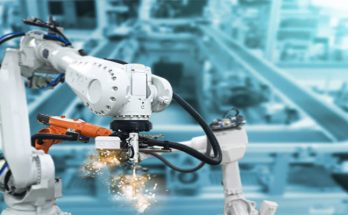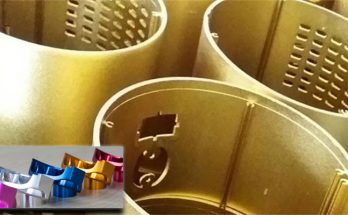 Since the 1920’s aluminium has revolutionised the metals industry. This lightweight, high strength metal is durable and offers a variety of flexible fabrication methods, which has allowed it to penetrate many industries.
Since the 1920’s aluminium has revolutionised the metals industry. This lightweight, high strength metal is durable and offers a variety of flexible fabrication methods, which has allowed it to penetrate many industries.
With the on-going development of finishing technologies, aluminium has become a sought-after material within several industries. Finished aluminium is a more attractive material and requires less maintenance. It is a cost-effective solution for both components and finished products.
Aluminium Anodising
This electrochemical process, integrates the aluminium oxide (Al2O3) layer onto aluminium. When the oxide layer is thickened, it strengthens the metal components and provides additional corrosion resistance. The anodising process creates a porous finish, which allows secondary coatings to be applied. The application of colours and sealants, can produce attractive and hard-wearing finishes.
Components which have undergone the anodising process at Edmo Ltd, have good ultra-violet stability, and do not chip or peel providing lasting appeal.
Anodised aluminium in the built environment
This material is a popular choice in architectural structures within the built environment. As a lightweight, high strength material it is suitable for use in many situations.
As a lightweight material, with corrosion resistance properties, anodised aluminium is ideal for sculptures and art installations. They can be moved into position with ease and require minimal maintenance.
When the material is coloured and sealed after anodising, it is often used as the window and door frames for commercial offices and shop fronts. With its high strength properties, it can support large window panes, and high traffic doors.
Natural, brushed or bright anodised aluminium is used internally for interior design features, within commercial, retail and hospitality environments.
When used as roofing, facades, guttering, roller shutters or sun breakers, minimal maintenance is required, and when the material is coloured, painting is not required, reducing costs.
Anodised aluminium in the automotive and aeronautical industries
As a lightweight, high strength material, aluminium is frequently used within the automotive, aeronautical and marine industries. To enhance the longevity of components, they are often anodised to provide greater corrosion resistance.
Within the automotive industry, numerous components are made for cars, trucks, public passenger vehicles and within heavy duty industrial vehicles. Small components like name plates and trim, alloy wheels and control panels are made of aluminium to reduce overall weight. High-performance vehicles use aluminium components, machined to high specifications. Vehicles with high performance fuels like ethanol, use fuel tanks fabricated out of anodised aluminium.
The structural elements and components of many planes are made from aluminium. The aeronautical industry requires high strength and light weight components, to be a cost-effective mode of travel. Since the 50’s, most commercial planes have used aluminium for the skin of the craft.
The trusses of the International Space Station, use coloured anodised aluminium to provide greater thermal capabilities in the extremes of space. The hand rails used for extra-vehicular activities, are made of gold coloured anodised aluminium. This colouring stands out against the rest of the space station, making it easy to find.




